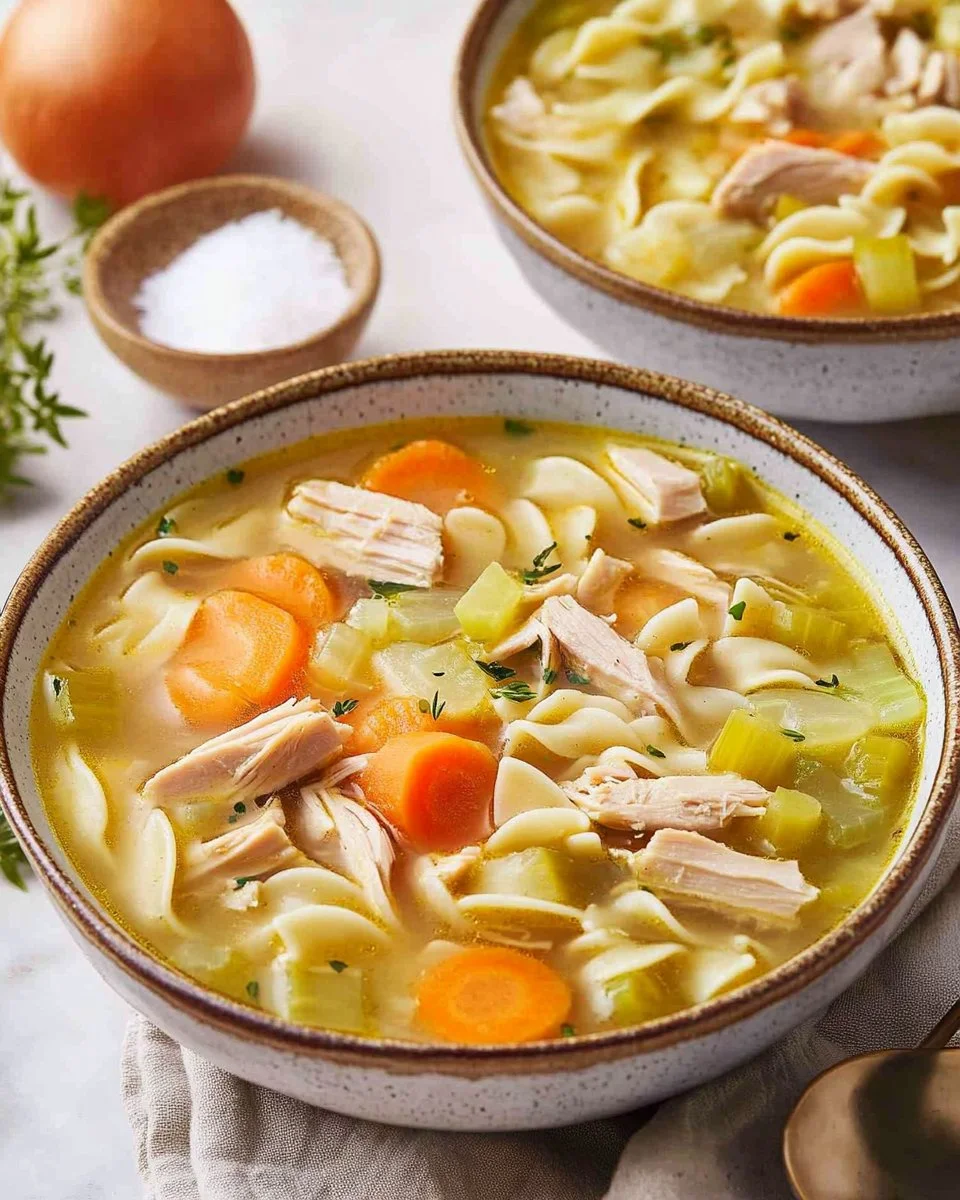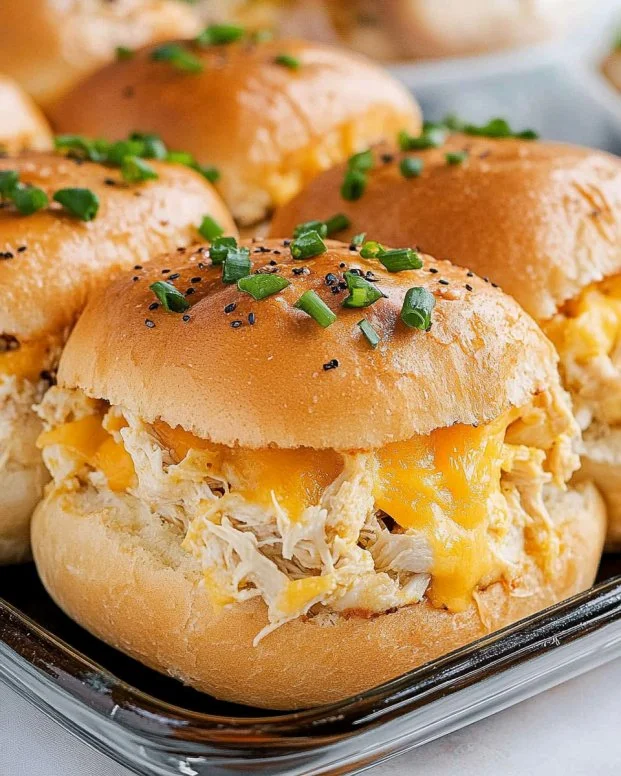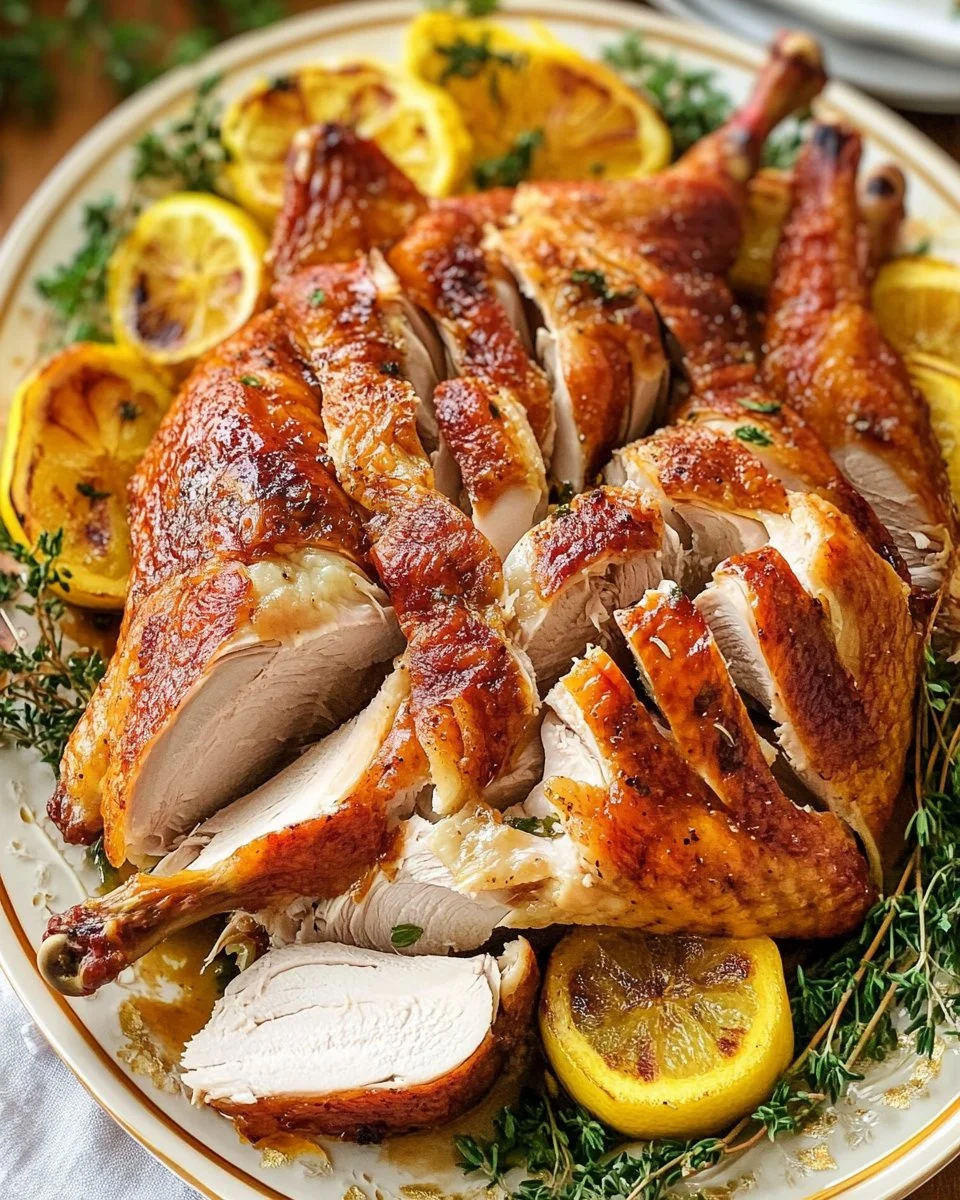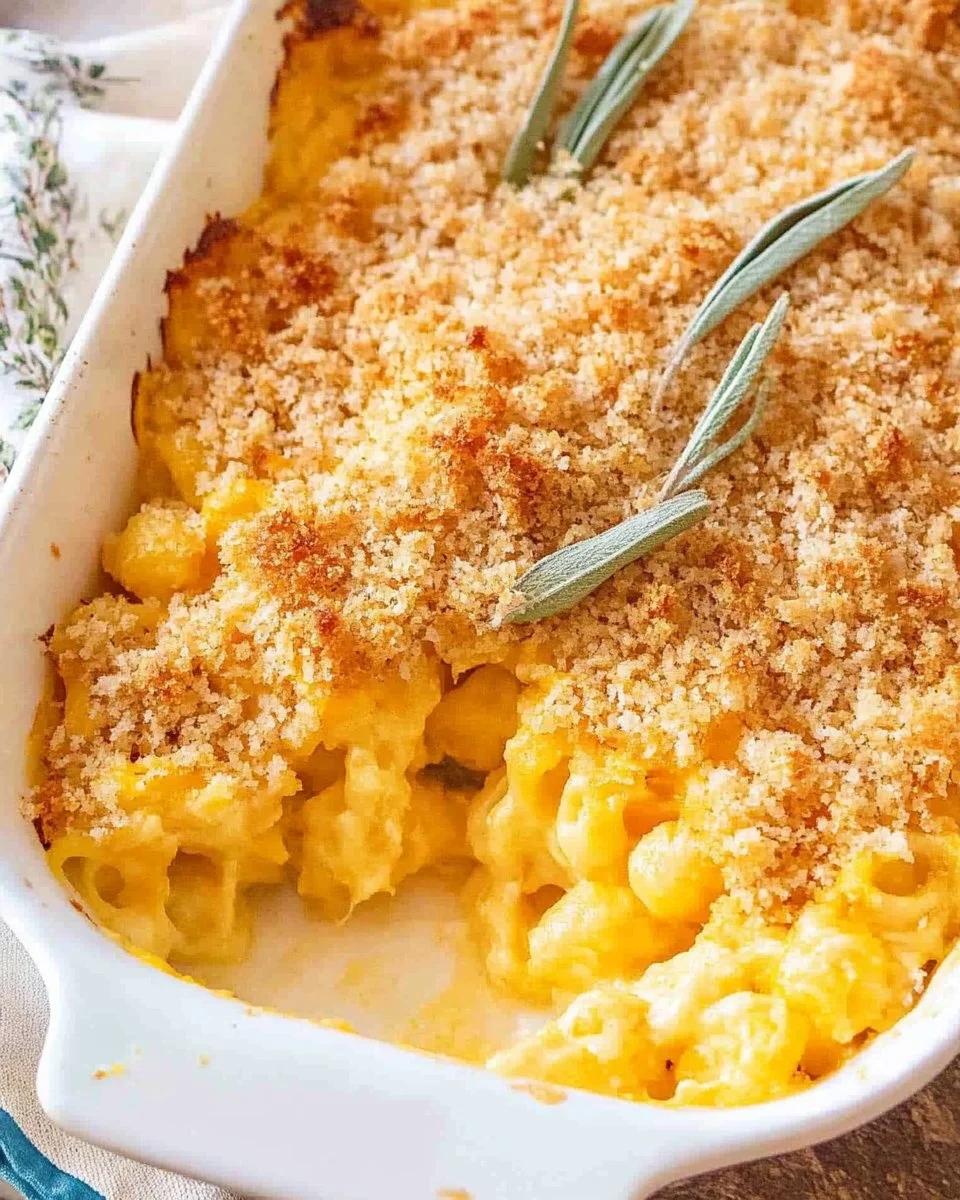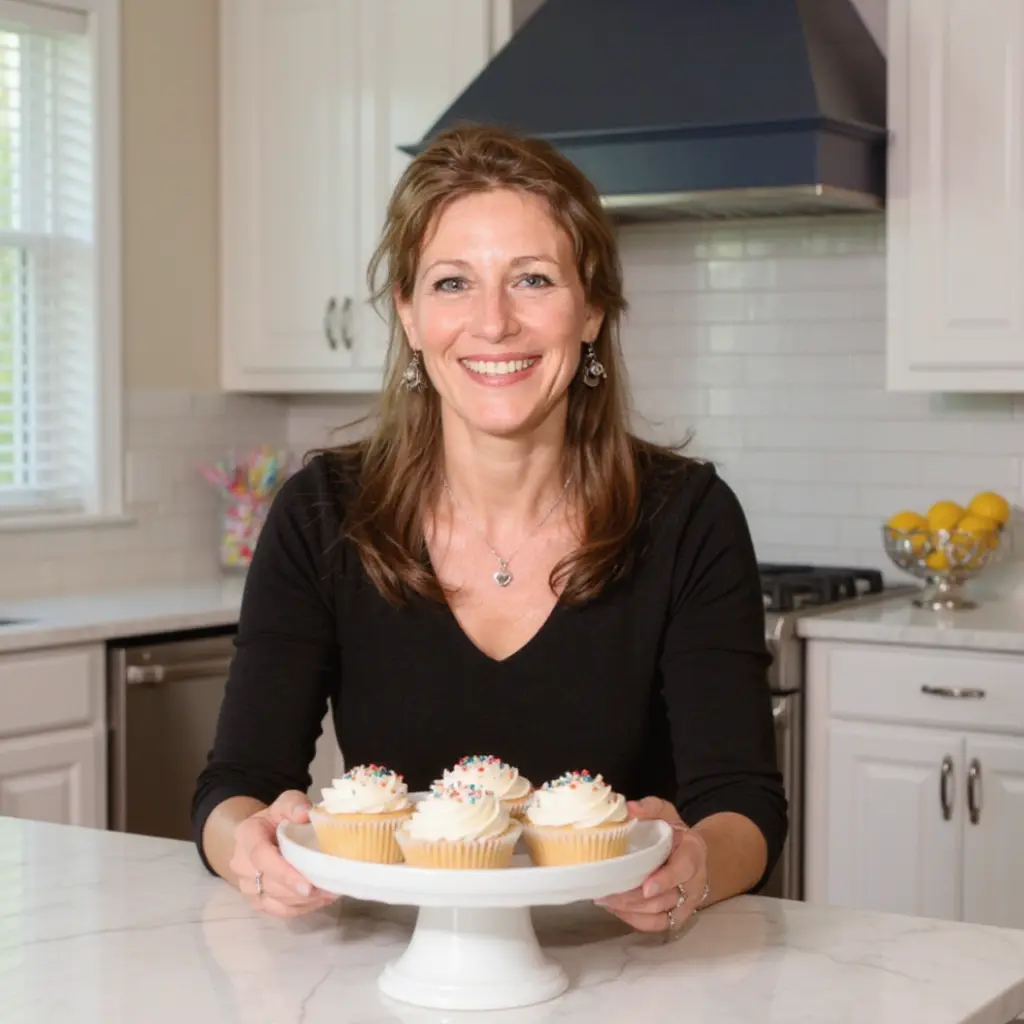If you’re here, you’re likely already a fan of that unique, spiced, caramel-like flavor that only Biscoff can deliver. And when that flavor is combined with the creamy, rich goodness of cheesecake? Pure magic. This isn’t just any dessert; it’s an experience. We’re diving deep into the world of Biscoff Cheesecake, exploring everything from its history to how to make it absolutely perfect.
What Makes Biscoff Cheesecake So Irresistible?
It’s the combination of things. First, you have that signature Biscoff flavor – a blend of cinnamon, nutmeg, ginger, allspice, and cloves, creating a warm, almost nostalgic taste. Then, there’s the texture. Imagine a perfectly smooth, creamy cheesecake filling sitting atop a crunchy, buttery Biscoff cookie crust. The contrast is divine. It’s not overly sweet, either. The spices balance the richness of the cream cheese, making it a dessert you can actually savor without feeling overwhelmed. That’s why it is a go-to treat.
Brief History and Origin of Biscoff
To truly appreciate Biscoff Cheesecake, we need to go back to where it all began: Belgium, in 1932. The Boone brothers, Jan, Emiel, and Henri, started the Lotus Bakeries in Lembeke. Lotus Bakeries created speculoos, a traditional spiced biscuit. These biscuits, eventually branded as “Lotus Biscoff” in the 1980s, were designed to be enjoyed with coffee. The name “Biscoff” itself is a portmanteau of “biscuit” and “coffee.” It wasn’t long before clever cooks started incorporating these flavorful cookies (and later, the spread) into desserts, and the Biscoff Cheesecake was born.
Biscoff: Biscuit and Coffee.
The connection between Biscoff and coffee is fundamental. The spices in the biscuits were carefully chosen to complement the flavors of coffee, creating a harmonious pairing. The slightly caramelized, crunchy texture of the biscuit also provides a lovely contrast to a smooth, rich cup of coffee. That’s the concept that makes its way into the flavor profile of the Biscoff Cheesecake.
Essential Ingredients for the Perfect Biscoff Cheesecake
Let’s break down what you’ll need to create this masterpiece. The right ingredients make all the difference.
Choosing the Right Cream Cheese
This is crucial. Full-fat cream cheese is essential for that classic cheesecake texture – rich, dense, and incredibly smooth. Low-fat versions often contain more water and stabilizers, which can result in a less creamy, sometimes even grainy, cheesecake. Philadelphia brand cream cheese is a popular and reliable choice, known for its consistent quality. However, other brands work well, too, just make sure it’s full-fat and a reputable brand.
The Star Ingredient: Biscoff Spread
This is where that signature Biscoff flavor comes in. Biscoff spread is essentially a creamy, spreadable version of the cookies. You have two options: smooth or crunchy. Smooth is generally preferred for the cheesecake filling itself, as it creates a uniform texture. Crunchy can be a fun addition to the crust or as a topping, adding extra textural interest. You can find Biscoff spread in most major supermarkets, often near the peanut butter and other nut butter.
Biscoff Biscuits: The Foundation of Flavor
These are the backbone of your crust (and often, a crumbled topping!). You’ll need a good amount of Biscoff biscuits to create a substantial base. The spiced flavor of the biscuits permeates the entire dessert, adding depth and warmth.
Other Key Ingredients
Here’s a quick rundown of the supporting cast:
- Butter: Melted butter binds the biscuit crumbs together, creating a solid crust. Unsalted butter is generally preferred, as it allows you to control the salt level in the recipe.
- Sugar: Granulated sugar is typically used in both the crust and the filling. It adds sweetness and contributes to the texture.
- Eggs: Eggs provide richness and structure to the cheesecake filling. Use large eggs, and make sure they’re at room temperature.
- Heavy Cream/Double Cream: This adds extra richness and creaminess to the filling. It’s crucial that your cream has a fat content of at least 36%, or the cheesecake may not be set properly.
- Vanilla Extract: A touch of vanilla extract enhances the other flavors and adds a subtle sweetness.
Heavy cream must be at least 36% fat or the cheesecake will not set.
This point is so important it deserves repeating! The high-fat content is what allows the cream to whip properly and create a stable, creamy filling. If you use a lower-fat cream, your cheesecake might be too soft or even runny.
Optional Ingredients
These ingredients can add extra nuances to your cheesecake:
- Sour Cream/Greek Yogurt: A small amount of sour cream or Greek yogurt can add a subtle tanginess and create an even creamier texture.
- Lemon Juice: A squeeze of lemon juice can brighten the flavors and balance the sweetness.
- Cornstarch/Flour: A small amount of cornstarch or flour can help to stabilize the cheesecake filling, especially if you’re baking it. This can help prevent cracks.
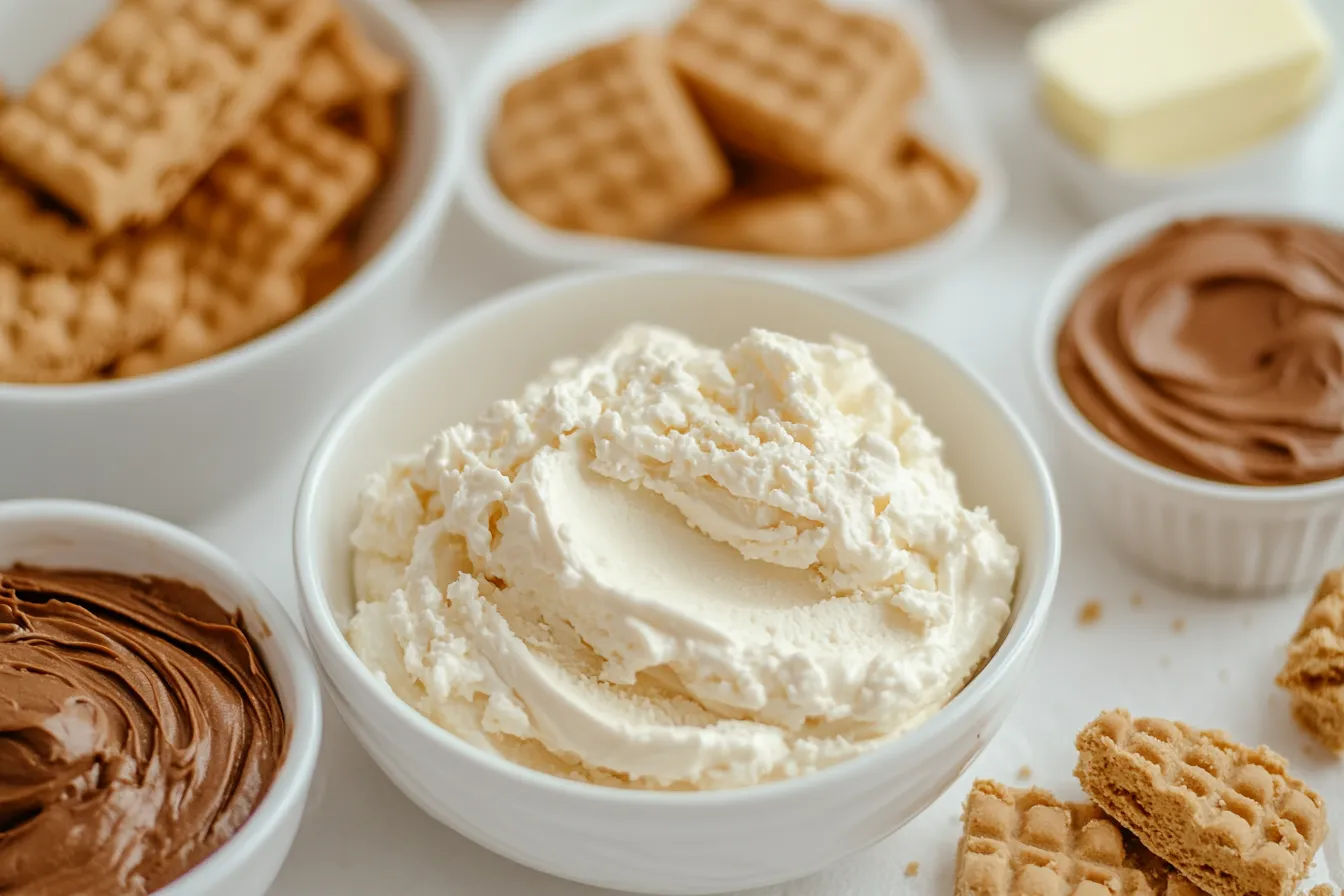
Step-by-Step Guide: Crafting Your Biscoff Cheesecake Masterpiece
Now, the fun part! Let’s walk through the process of making your Biscoff Cheesecake.
Preparing the Biscoff Cookie Crust
- Crush the Biscuits: You can use a food processor for a fine crumb, or place the biscuits in a zip-top bag and crush them with a rolling pin for a slightly coarser texture.
- Combine with Melted Butter: Mix the biscuit crumbs with melted butter until evenly moistened.
- Press into Pan: Firmly press the mixture into the bottom of a springform pan (a pan with removable sides). You can use the bottom of a measuring cup or your fingers to create an even layer.
- Bake or No-Bake: For a baked crust, bake it in a preheated oven for about 10 minutes to set it. For a no-bake crust, simply chill it in the refrigerator for at least 30 minutes.
Creating the Creamy Biscoff Cheesecake Filling
- Beat Cream Cheese: In a large bowl, beat the room-temperature cream cheese with an electric mixer until completely smooth and fluffy. This is key to avoiding lumps.
- Add Sugar: Gradually add the sugar and continue beating until fully incorporated.
- Incorporate Biscoff Spread: Add the Biscoff spread and beat until smooth and evenly distributed.
- Add Eggs One at a Time: Beat in the eggs one at a time, mixing on low speed after each addition. Do not overmix – this can incorporate too much air, leading to cracks.
- Add Cream and Vanilla: Gently fold in the heavy cream and vanilla extract until just combined.
Baking the Cheesecake
- Water Bath (Optional but Recommended): A water bath (placing the cheesecake pan in a larger pan filled with hot water) helps to create a more even baking environment and prevent cracks.
- Bake: Pour the filling over the prepared crust and bake in a preheated oven at a low temperature (around 325°F/160°C) for a specific time, often 50-70 minutes, or until the center is just set with a slight jiggle.
- Avoid opening and closing the oven to prevent the cheesecake from cracking.
No-Bake Method
- Skip the Oven: If you’re making a no-bake cheesecake, simply pour the filling over the chilled crust.
- Chill Thoroughly: Cover the cheesecake and chill it in the refrigerator for at least 6 hours, or preferably overnight, to allow it to set completely.
Cooling and Chilling: The Key to Perfect Texture
Whether you bake your cheesecake or not, proper cooling and chilling are essential.
- Slow Cooling (Baked Cheesecakes): After baking, turn off the oven and let the cheesecake cool slowly inside the oven with the door slightly ajar for about an hour. This gradual cooling helps prevent cracks.
- Room Temperature: After the initial cooling, let the cheesecake come to room temperature completely.
- Chill: Once at room temperature, cover the cheesecake and chill it in the refrigerator for at least 4 hours, or preferably overnight, to allow it to fully set and develop its flavors.
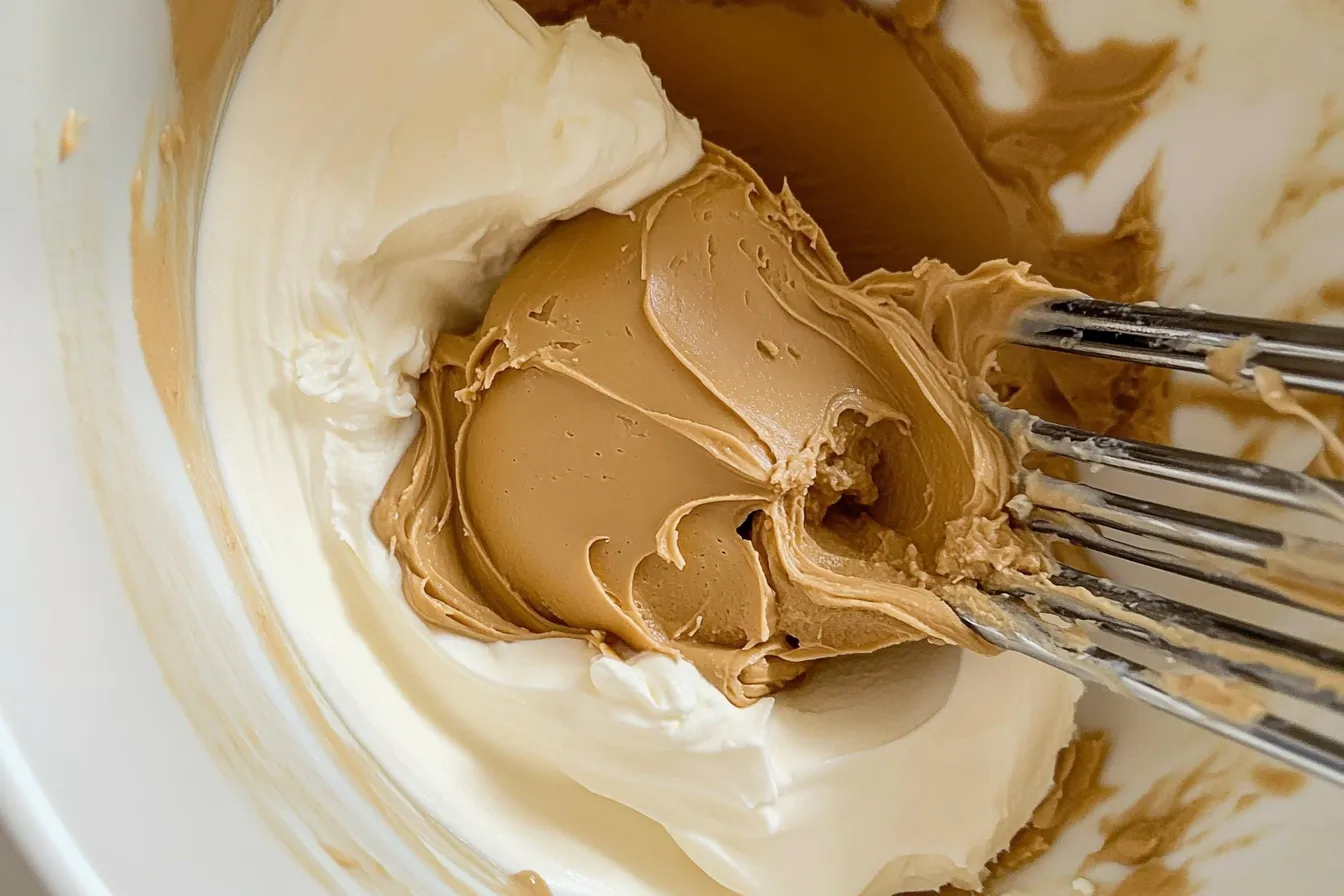
9 Tricks For Biscoff Cheesecake Perfection Now!
Let’s elevate your cheesecake game with these pro tips.
Trick 1: Room Temperature Ingredients – The Secret to Smoothness
Using room-temperature cream cheese, eggs, and even Biscoff spread ensures that everything mixes together smoothly and evenly, preventing lumps and creating a velvety texture.
Trick 2: Don’t Overmix – Preventing Cracks and Maintaining Creaminess
Overmixing incorporates too much air into the batter, which can cause the cheesecake to puff up during baking and then collapse and crack as it cools. Mix at low speed until ingredients are combined.
Trick 3: The Perfect Crust – Achieving the Ideal Texture and Thickness
For a sturdy crust that holds its shape, make sure to press the biscuit crumb mixture firmly and evenly into the pan. If you prefer a thicker crust, simply use more biscuits and butter.
Trick 4: Mastering the Biscoff Swirl
To create a beautiful swirl, dollop spoonfuls of melted Biscoff spread on top of the cheesecake filling, and then use a knife or toothpick to swirl it gently through the batter. Don’t over-swirl, or you’ll lose the distinct pattern.
Trick 5: The Water Bath Debate – Is It Necessary?
A water bath is highly recommended for baked cheesecakes. It creates a humid environment that helps the cheesecake bake evenly and prevents the top from drying out and cracking. However, if you’re short on time or don’t have a large enough pan, you can skip it, but be extra careful to bake at a low temperature and monitor for doneness.
Trick 6: Cooling and Chilling – Patience is Key
This is arguably the most important trick! Allowing the cheesecake to cool slowly and then chill thoroughly is essential for achieving that perfect, creamy texture and preventing cracks. Don’t rush this process.
Trick 7: Getting Clean Slices – Warm Knife Technique
To get those picture-perfect slices, run a sharp knife under hot water, wipe it dry, and then slice the cheesecake. Repeat this process for each slice.
Trick 8: Creative Toppings and Garnishes – Elevating the Presentation
While a simple Biscoff drizzle is classic, feel free to get creative! Crumbled Biscoff biscuits, whipped cream, chocolate shavings, fresh berries, or a caramel drizzle can all add extra flavor and visual appeal.
Trick 9: Storage Secrets – Keeping Your Cheesecake Fresh
Store leftover Biscoff Cheesecake in an airtight container in the refrigerator for up to 5 days. You can also freeze it for longer storage.
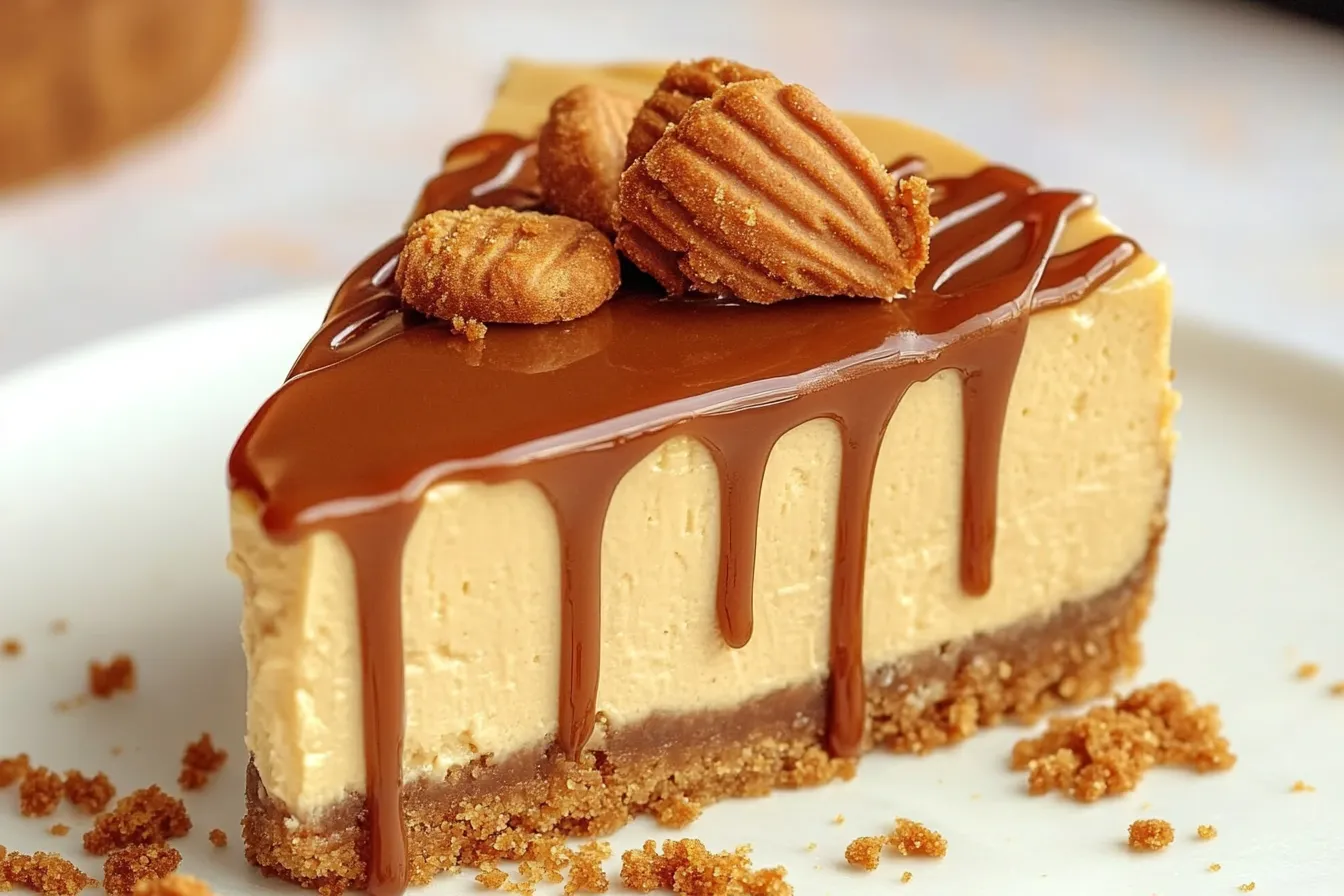
Biscoff Cheesecake Variations and Twists
Once you’ve mastered the basic recipe, try these fun variations:
Chocolate Biscoff Cheesecake
Add cocoa powder or melted chocolate to the cheesecake filling for a rich, chocolatey twist.
Vegan Biscoff Cheesecake
Use vegan cream cheese, plant-based butter, and a suitable egg replacer to create a delicious dairy-free and egg-free version.
Mini Biscoff Cheesecakes
Make individual cheesecakes using muffin tins or small ramekins. These are perfect for portion control and easy serving.
Biscoff Cheesecake Bars
Instead of a round cheesecake, press the crust into a rectangular baking dish and pour the filling on top. Once chilled, cut into bars for a casual treat.
Biscoff Cheesecake with different toppings.
Experiment with all sorts of toppings, for example, try placing fresh strawberries on top.
Other Creative Variations
Add chopped nuts, fresh fruit (like raspberries or bananas), or a swirl of caramel sauce to the filling for even more flavor combinations.
Troubleshooting Common Biscoff Cheesecake Problems
Let’s address some common issues and how to fix them:
Why Did My Cheesecake Crack?
Cracks are often caused by overmixing, overbaking, or rapid temperature changes. Follow the tips above (don’t overmix, use a water bath, cool slowly) to minimize the risk of cracks. If your cheesecake does crack, don’t worry! It will still taste delicious. You can cover it with toppings to hide the imperfections.
My Cheesecake Is Too Runny – What Went Wrong?
A runny cheesecake usually means it wasn’t baked or chilled long enough, or the ingredients weren’t measured correctly. Make sure to use full-fat cream cheese and heavy cream with at least 36% fat. If it’s a no-bake cheesecake, chill it for a longer period, even overnight.
How to Fix a Soggy Crust
A soggy crust can be caused by using too much butter, not baking it long enough (if it’s a baked crust), or not letting it cool completely before adding the filling. Make sure to measure the butter carefully and bake the crust until it’s firm and golden brown.
My Cheesecake Tastes Bland – How Can I Enhance the Flavor?
If your cheesecake lacks flavor, make sure you’re using enough Biscoff spread and a good quality vanilla extract. You can also add a pinch of salt to enhance the other flavors. A squeeze of lemon juice can also brighten the taste.
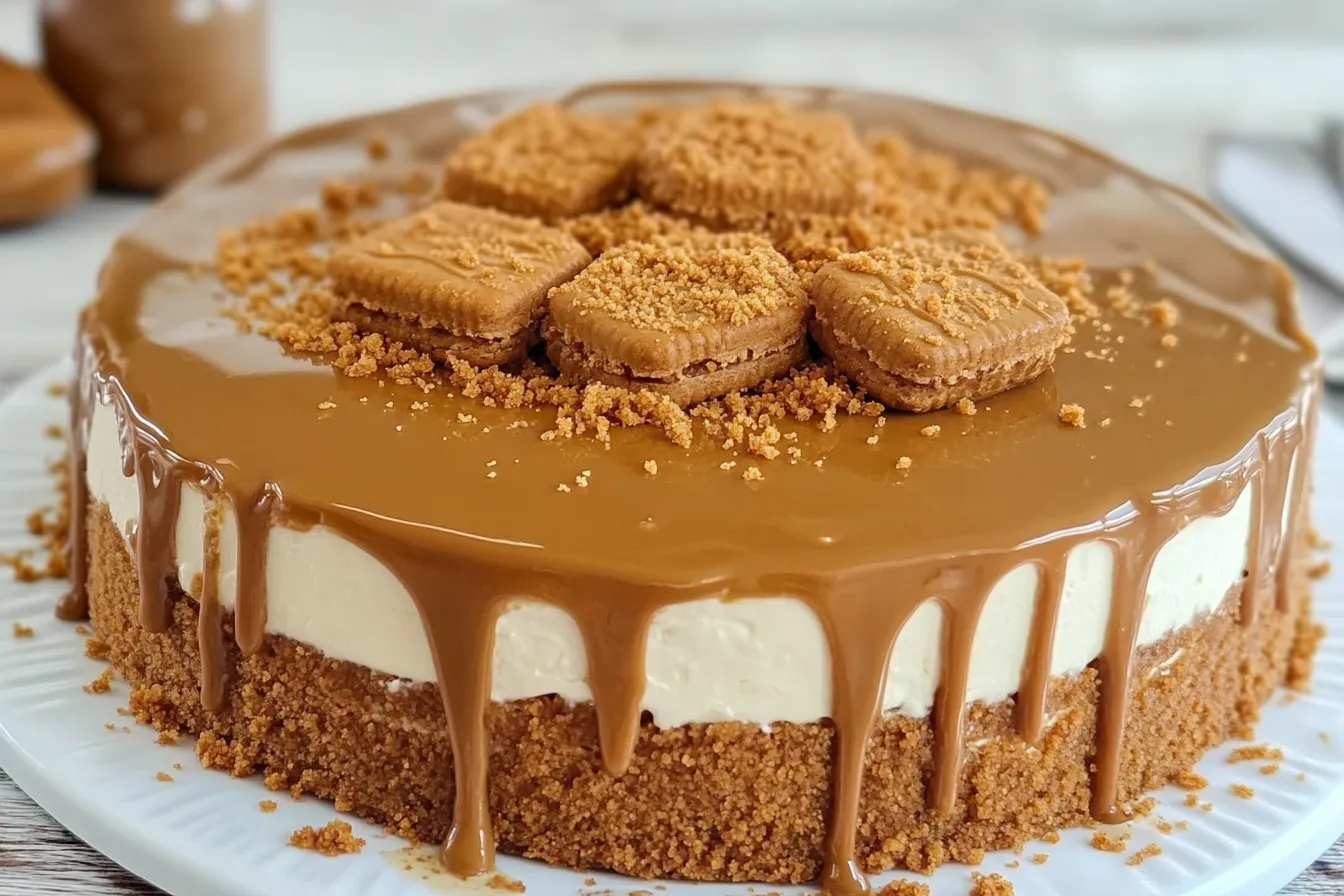
Frequently Asked Questions
Let’s answer some common questions:
What can I use instead of Biscoff cookies?
If you can’t find Biscoff cookies, you can use other similar spiced cookies, such as speculoos, gingersnaps, or graham crackers. However, the flavor will be slightly different.
How long does Biscoff Cheesecake last in the fridge?
Properly stored in an airtight container, Biscoff Cheesecake will last for up to 5 days in the refrigerator.
Can I freeze Biscoff Cheesecake?
Yes! Wrap the cheesecake tightly in plastic wrap and then aluminum foil, or place it in an airtight container. Freeze for up to 2-3 months. Thaw in the refrigerator overnight before serving.
Can I make Biscoff Cheesecake without eggs?
Yes, there are egg-free cheesecake recipes available. You can often use a combination of cornstarch, heavy cream, and sometimes condensed milk to create a stable filling without eggs.
Is this cheesecake suitable for people with nut allergies?
Biscoff cookies and spread do not contain nuts. However, always check the packaging for the most up-to-date allergen information, as manufacturing processes can change. If you’re making this for someone with a nut allergy, be sure to check all other ingredients as well.
Can I make this cheesecake gluten-free?
Yes, you can use gluten-free biscuits that are similar in texture and flavor to Biscoff cookies to make a gluten-free crust. Ensure that all other ingredients are also gluten-free.
What is Biscoff?
Biscoff is a brand name for speculoos cookies, a type of spiced biscuit originating in Belgium. The cookies are known for their unique caramel-like flavor and crunchy texture. Biscoff spread is a creamy, spreadable version of the cookies.
Serving and Pairing Suggestions
Enhance your Biscoff Cheesecake experience:
Best Drinks to Enjoy with Biscoff Cheesecake
Coffee, of course! The spices in Biscoff complement coffee beautifully. Other great options include milk, tea (especially chai or black tea), or a dessert wine like Sauternes.
Complementary Desserts
Serve your Biscoff Cheesecake with other desserts that share similar flavor profiles, such as apple pie, pumpkin pie, or spice cake.
Best Serving Temperature
Biscoff Cheesecake is best served chilled. This allows the flavors to meld and the texture to be at its creamiest.
Presentation Ideas
- Dust the top with cocoa powder or cinnamon.
- Drizzle with melted Biscoff spread.
- Garnish with fresh berries or whipped cream.
- Arrange a few Biscoff cookies around the edge of the cheesecake.
Conclusion
Biscoff Cheesecake is a truly special dessert that combines the unique, spiced flavor of Biscoff with the creamy richness of cheesecake. It’s a crowd-pleaser, perfect for any occasion.
Recap of Key Takeaways and Tips
- Use full-fat cream cheese and heavy cream (at least 36% fat).
- Don’t overmix the batter.
- Cool and chill the cheesecake thoroughly.
- Get creative with toppings and variations.
Now it’s your turn! Try this recipe and experience the magic of Biscoff Cheesecake for yourself. Share your creations and any variations you try – we’d love to see them! Leave a comment below and let us know how it turned out. Happy baking!

